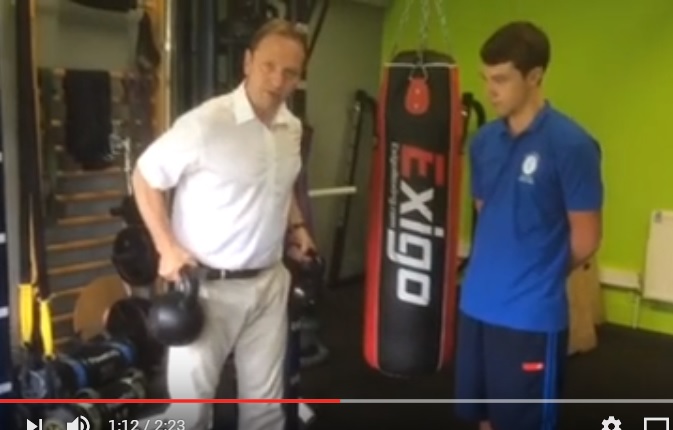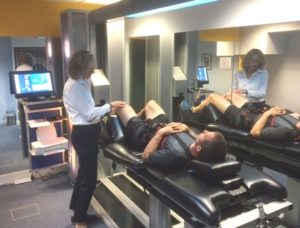During an IDD Therapy training with the physio team at The Sports Injury Clinic in Fordham, Cambridgeshire, I took advantage of some kettle bells in their fantastic gym to answer an important question which is often asked by manual therapists.
Why do we need a machine when we have our hands? The short video explains why.
Whilst an IDD Therapy machine doesn’t have the sensitivity of the hands, that is not its purpose.
IDD Therapy gives manual therapists a powerful tool which enables them to decompress and mobilise targeted spinal segments in a longitudinal plane, with sufficient force, time, control and patient comfort to achieve desired therapeutic objectives.
IDD Therapy is not ‘man/woman versus machine’. IDD Therapy is a tool which clinicians can use as part of a programme of care.
There can be many reasons why certain patients do not get better with manual therapy and exercise.
It is easy to blame the patient for lack of compliance to exercise etc.
But when compression and immobility create a downward spiral of disc destruction and facet loading, surely it makes intuitive sense to want to relieve pressure on the disc, unload the facets and improve mobility by working soft tissues.
And once you get that improvement in spinal mobility and in turn start to see real pain relief, from that point on clinicians can introduce exercises and the full spectrum of rehab programmes which are so important for long term success.
Note – most back pain resolves itself within 6 weeks. The majority of the remaining back pain cases will be resolved with some form of manual therapy, exercise and behavioural adjustments. And then there is a group of patients who need something more for their pain.
It is for this group of back pain sufferers that IDD Therapy Disc Treatment comes to the fore, BEFORE the need to consider injections and/or surgery (except of course where emergency surgical intervention is required).
Test it yourself!
If you happen to frequent gyms or have access to some free weights, try this yourself (be careful with your lifting technique!): take two 20kg kettle bells or dumbells (or heavier in fact), lift, hold and see how long you can do that for.
Enquiries
If you are a back or neck pain sufferer and would like to speak to an IDD Therapy provider, use the clinic finder to locate your nearest clinic see https://iddtherapy.co.uk/clinic-finder/
Clinics – if you are interested in providing IDD Therapy in your community, find out here how to get started https://iddtherapy.co.uk/become-a-provider/
AUTHOR: Stephen Small is Director of IDD Therapy UK and is on a mission to improve conservative treatment programmes for back pain sufferers. He created the first “Disc Clinic” and oversees the expansion of the IDD Therapy provider network in the UK and in Europe. To connect via Linkedin go to https://www.linkedin.com/in/stephen-small-0b404718



